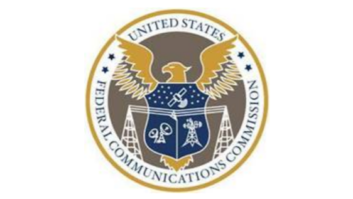 The FCC announced today that it will not apply long-standing TV station ownership restrictions to the lease of spectrum to provide “Broadcast Internet” services via the new ATSC 3.0 advanced television standard.
The FCC announced today that it will not apply long-standing TV station ownership restrictions to the lease of spectrum to provide “Broadcast Internet” services via the new ATSC 3.0 advanced television standard.
This decision comes in the form of a Declaratory Ruling approved unanimously during the FCC’s June Open Commission meeting. It allows a broadcast TV licensee to lease spectrum to another broadcaster (including one in the same geographic market) or to a third party for ancillary and supplementary service without triggering the FCC’s broadcast attribution or ownership rules.
The commission said it was an important step in the growth of next-generation data services that will come about from the transition to ATSC 3.0 and serve as a complement to the nation’s future 5G network. As a “one-to-many” IP service, this could allow more efficient software downloads for autonomous vehicles, smart agriculture or telemedicine and are broadly referred to what Carr termed as “Broadcast Internet.”
In addition to the Declaratory Ruling, the FCC issued an accompanying Notice of Proposed Rulemaking, seeking comments on whether and how to modify its existing ancillary and supplementary service rules in order to further promote the deployment of Broadcast Internet services. The commission also seeks public input on potential uses of the new technological capability associated with ATSC 3.0 and any existing regulatory barriers to deployment, as well as if any changes are needed to the ancillary and supplementary service fee rules and the rules defining derogation of service and analogous services.
“Today’s action takes important steps to further unlock the potential of broadcast spectrum, empower innovation and create significant value for broadcasters and the American public alike by removing the uncertainty cast by legacy regulations,” the FCC said.
FCC Commissioner Brendan Carr said Broadcast Internet could be a new competitive broadcast pipe, giving broadcasters an even greater role in the competitive market.
Commissioner Jessica Rosenworcel said that traditional TV was on the move, and while it is important to clarify that broadcast ownership rules don’t apply, it was also important to remember that ATSC 3.0 lacks a return path for data, which is a problem for telehealth and remote work.
NAB’s Senior Vice President of Communications Ann Marie Cumming issued a statement on the FCC’s actions: “NAB appreciates the commission’s efforts to provide greater regulatory certainty with respect to potential future uses of the NextGen TV transmission standard. Broadcasters are excited about innovative applications this standard makes possible, in addition to the standard’s ability to unlock the next generation of television service for our viewers.”












